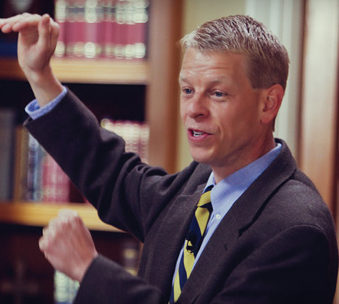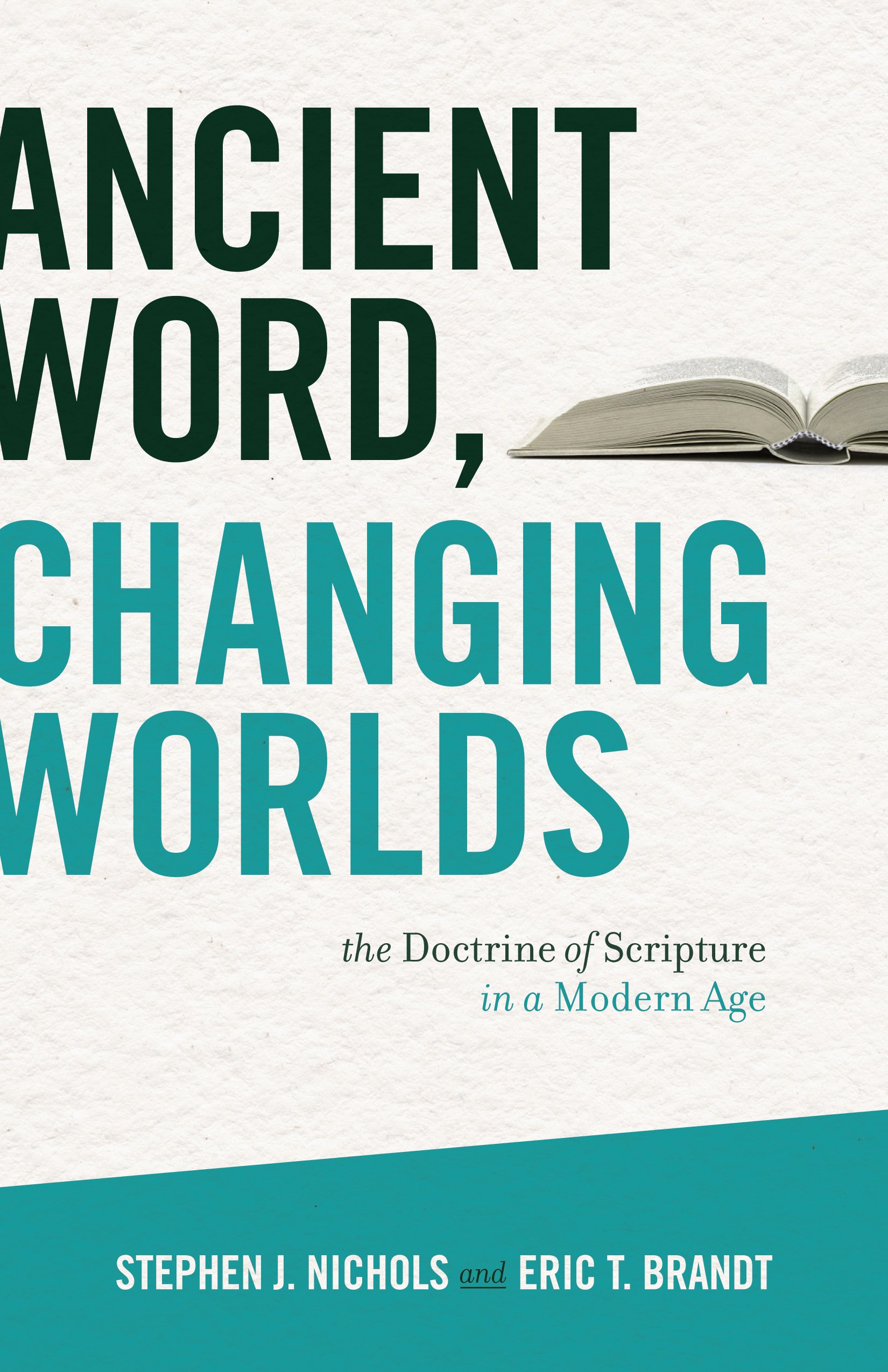Welcome again to Books At a Glance. I’m Fred Zaspel and we’re talking again to Dr. Stephen Nichols about the Protestant Reformation. This time Dr. Nichols will tell us about the leading religious and theological questions at issue during that important period.
Steve, welcome back!
Nichols:
It’s great to be back; thanks for having me again.
Zaspel:
What were the key theological questions being asked at the time of the Reformation?
Nichols:
I think there’s three ways you can get at this. One way, is you could look at the solas, and I think the solas are a very helpful construct. We’ve got sola Scriptura, and the authority of Scripture, we’ve got sola Fide, sola gratia, solus Christus, and the doctrines of grace, and we have soli Deo gloria, which has a lot of implications to it. So that’s one way—the solas. Another way is to say, how did the Roman Catholic Church respond to this? Because that’s sort of interesting; we find out what the reformers were reforming. The Roman Catholic Church’s response, one of the prongs of the response was to call a Council. That would be the Council that was called at Trent and so we sometimes speak of the Canons of Trent, or the Council of Trent. There you see that they focused in on two issues in particular. One is the question of authority, and so they come down saying it’s Scripture and tradition is the church’s authority. And the other is justification; and there, too, it’s a combination. It’s justification is by faith and works. So when you look at Trent and you look at where Trent is drawing a line in the sand of what Catholic doctrine is, that sheds light on what the reformers were about. A third thing, and this is a text by Calvin, this is a book or text that Calvin wrote in 1543, and it simply a text he called On the Necessity of Reforming the Church. By then the Reformation is a few decades in swing and there are people wondering, why all the fuss? Why is this necessary? What are we really about, and is this important? Calvin takes that up in writing this text. What he says in the text is, the issue at stake here is the worship of God. I love this approach of Calvin’s that ultimately what is at the center of church life that needs reforming, what is at the center of the theology that needs reforming, and the answer to that is worship. The worship of God is what’s at the center.
Zaspel:
What answers were given, and how are these issues relevant for us today? And with regard to the three gospel solas—solus Christus, sola gratia, sola fide—explain the logical connection between them.
Nichols:
That’s a great question. In terms of the distinctions between the two, the first thing that we need to see, we can use Luther’s own life for this. The question for Luther and what would differentiate the Reformation from Roman Catholicism is really in the Latin word, sola. The issue is Scripture alone. And so for Luther and what he was up against in the church was that it wasn’t a question of whether your ideas are biblical or the church’s ideas are biblical; it’s that the church is saying to Luther—we reject this idea that we’re going to argue based on just Scripture. You need to bring yourself into conformity to the teachings of the church and the councils of the church and the teachings of the Pope and the accepted practices. The problem Luther had with this, was the church itself erred, the church itself contradicted itself. He says this in his speech at Worms. And the church itself had changed over time. Indulgences is a great example. What Leo the 10th was doing with the indulgence sale in 1516 and 1517, was unprecedented. He was actually not consistent with Catholic teaching. So these were the kinds of things Luther wanted to debate. And in these debates the church simply said, you need to submit to the church’s authority. That’s a huge distinction between Luther and what was happening in the Roman Catholic Church. I think in terms of some of the other reformers—and Luther does this in his Babylonian Captivity of the Church—we look at the sacraments. By the time of the Reformation the church had seven sacraments. Luther says only two sacraments are biblical and that is the partaking of the Lord’s supper and baptism. And not only are those two the only biblical, so the other five are not properly sacraments and need to go, but even the way the two are being practiced in the church is wrong. So that Luther has in company with all of the reformers. They also look at how the sacraments had built up this extra biblical structure around the Scriptures, around the gospel. And so you look at the reformers and they were able to say, there’s the true church and the true church is the one that is practicing according to the word of God; and there’s the false church, and the false church is the one who has added, to use a biblical expression, the traditions of men to the biblical teaching.
Zaspel:
What is the legacy of those answers? How have they shaped church history, broadly speaking?
Nichols:
On the one hand, this is Protestantism versus Roman Catholicism. Back in the 80s there was this move of evangelicals and Catholics together, and moving a little more recently we have the New Perspective on Paul. In this year of 2017, it’s very interesting to watch the Roman Catholic Church. They have made significant overtures to the Lutheran Church basically saying, look, there were problems on both sides; the church was in the wrong, Luther was a little exuberant and overemphasized things; let’s just get past those differences, they no longer apply. And in effect, what we’re saying is the Reformation is over; been there, done that, now let’s move on. And it’s interesting you see that ecumenically in the Roman Catholic Church—I just saw this the other day, too, to bear this out – the Pope renamed one of the piazzas, one of the squares in Rome, Luther Piazza. And that’s a pure PR attempt to say, we welcome him back, our former monk, we just welcome him back, and let bygones be bygones. You see it on that level, but you also see it within evangelicals who, again, this New Perspective, and I know you’ve got resources there at Books At a Glance that will help folks understand what’s going on with the New Perspective. But it’s a clear distancing itself from the old perspective. And the old perspective is the perspective of the reformers. And we have to look at this—the gospel is at stake and that’s the urgency here with these issues.
Zaspel:
I wondered while were saying that, how Luther would respond to that. Would he say, okay, I will come back? (laughing) I don’t think so.
Nichols:
We’re on sacred ground when we attempt to speak for someone, and speak in an entirely different language than they were consistently speaking their entire career.
Zaspel:
It is being said that the major organ of sense for the medieval period is the eye. For the Reformers, it is the ear. Could you comment on that?
Nichols:
Yes. A lot of this is the illiteracy of much of the Middle Ages and so we look at the stained glass—this was the pictorial way to tell the story. To tell the biblical story, and to tell the story of the Roman Catholic perspective, the story of the saints. So, the icons, the artwork, the stained glass, all of that was teaching tools. And it was teaching tools given, again, the widespread illiteracy and it was the visual means of teaching. Even the sacrament itself was part of this – the Mass was this visual of holding up the body and holding up the blood of Christ. And if you look at what the Mass actually says it does, this is the re-crucifixion of Christ. This is why what ultimately is going on in the Mass is blasphemous. It is not just a reenactment, it is a re-crucifixion of Christ. This is a heavy visual emphasis, there, in the act of the Mass. For the reformers, again, we go back to sola Scriptura, the Word is central. And the preached Word is central. You know, we miss this. One of the big contributions of the reformers is to simply get back to preaching the Word. It’s such a given in our churches that the center of Sunday is the sermon, well, not in all churches – it should be in all churches.
Zaspel
But that’s the legacy of the Reformation.
Nichols:
That’s the legacy of the Reformation, to simply stand up and preach the Word of God. So this is Zwingli at Zürich, gets appointed to the Great Münster, the Great Münster there at Zürich, stands up and starts preaching at Matthew 1:1, and just keeps preaching. This was unprecedented. So the Word was central for the reformers.
Zaspel:
We’re talking to Dr. Stephen Nichols about the Protestant Reformation. He is the author of The Reformation: How a Monk and a Mallet Changed the World—as well as many other church history related books that you’ll want to check out on this page. Join us next time when Steve returns to talk about Nationalism and the Printing Press and their connection to the Protestant Reformation.
Steve, thanks for talking to us again today.
Nichols:
My pleasure; thank you.
Editor’s Note: Below are some titles by Dr. Stephen Nichols that will be of interest to you!
The Reformation: How a Monk and a Mallet Changed the World
Paperback
Kindle
Martin Luther: A Guided Tour of His Life and Thought (Guided Tour of Church History)
Paperback
Kindle
The Church History ABCs: Augustine and 25 Other Heroes of the Faith
Paperback
Kindle
Welcome to the Story: Reading, Loving, and Living God’s Word
Paperback
Kindle
Jesus Made in America: A Cultural History from the Puritans to “The Passion of the Christ”
Paperback
Kindle
For Us and for Our Salvation: The Doctrine of Christ in the Early Church
Paperback
Kindle
Ancient Word, Changing Worlds: The Doctrine of Scripture in a Modern Age
Paperback
Kindle
Pages From Church History: A Guided Tour of Christian Classics
Paperback
Kindle
Heaven on Earth: Capturing Jonathan Edwards’s Vision of Living in Between
Paperback
Kindle
J. Gresham Machen: A Guided Tour of His Life and Thought (Guided Tour of Church History)
Paperback
Kindle
An Absolute Sort of Certainty: The Holy Spirit and the Apologetics of Jonathan Edwards
Paperback

